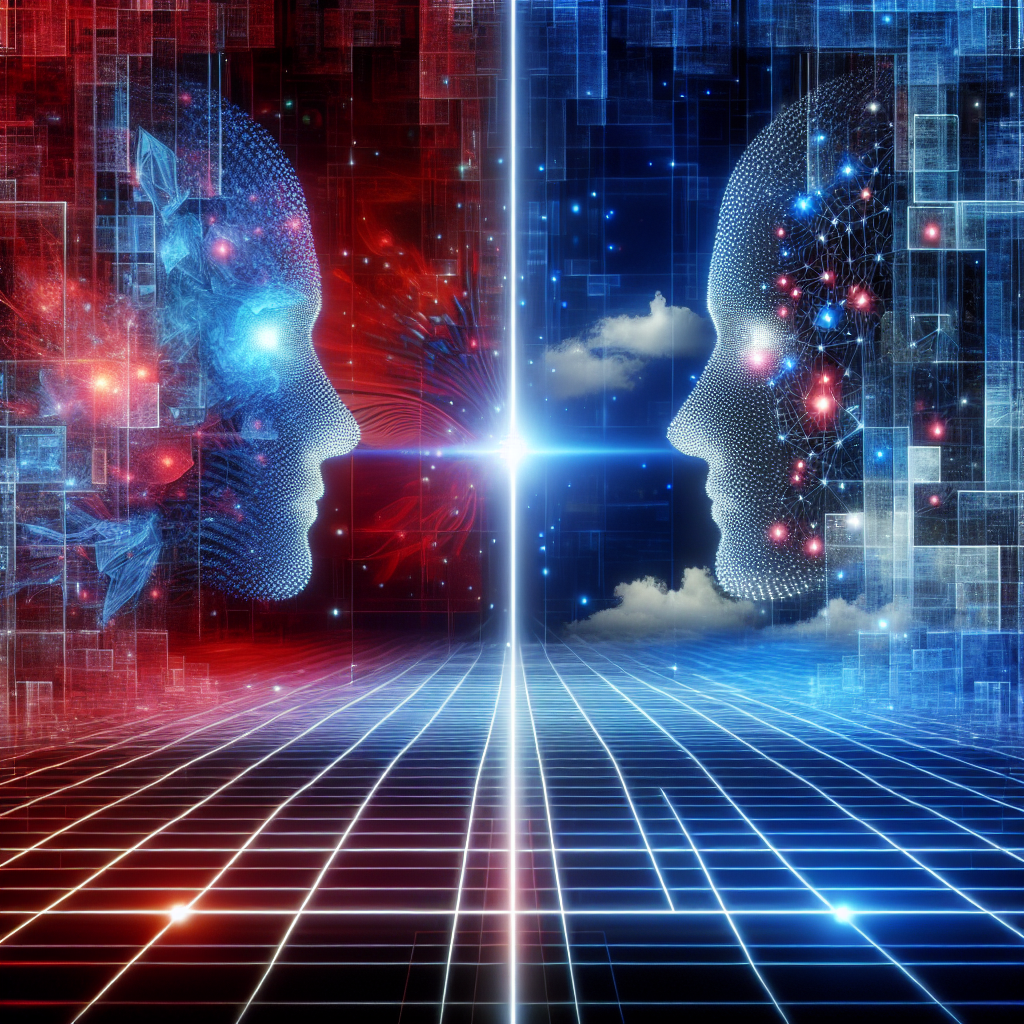Artificial Intelligence (AI) has become a hot topic in recent years, with advancements in technology and research pushing the boundaries of what is possible with machine learning and automation. One of the key debates within the AI community is the battle between Artificial General Intelligence (AGI) and Artificial Narrow Intelligence (ANI). Both forms of AI have their own strengths and weaknesses, and the race to achieve AGI – a system that can perform any intellectual task that a human can do – is a fierce one.
AGI vs. ANI: What’s the Difference?
AGI refers to a type of intelligence that is capable of understanding and learning any intellectual task that a human can do. This includes tasks such as problem-solving, reasoning, and understanding language. ANI, on the other hand, refers to AI systems that are designed to perform specific tasks, such as playing chess, driving a car, or recognizing faces. ANI is limited in its capabilities and cannot perform tasks outside of its programmed parameters.
The battle between AGI and ANI is one of superiority – which form of AI will ultimately be more powerful and transformative for society? Proponents of AGI argue that achieving true artificial general intelligence will revolutionize nearly every aspect of human life, from healthcare to transportation to entertainment. ANI supporters, on the other hand, argue that specialized AI systems are more practical and efficient for solving specific problems and tasks.
The Race for AGI: A Brief History
The concept of AGI has been around for decades, with scientists and researchers striving to create a machine that can match or exceed human intelligence. In the 1950s, computer scientist Alan Turing proposed the Turing Test, a method for determining whether a machine exhibits human-like intelligence. Since then, researchers have made significant progress in developing AI systems that can perform complex tasks, such as IBM’s Watson, which famously defeated human champions on the quiz show Jeopardy in 2011.
Despite these advancements, achieving true AGI remains a formidable challenge. The human brain is a complex and adaptive organ, capable of learning and reasoning in ways that are still not fully understood by scientists. Creating a machine that can replicate the full range of human cognitive abilities is a monumental task that requires breakthroughs in neuroscience, computer science, and artificial intelligence.
The Battle for Superiority: AGI vs. ANI
The battle for superiority between AGI and ANI is a complex and multifaceted one. Proponents of AGI argue that achieving true artificial general intelligence will unlock new possibilities for humanity, from curing diseases to exploring the cosmos. They believe that AGI will be able to solve complex problems that are beyond the capabilities of ANI systems, leading to unprecedented advancements in science, technology, and society.
On the other hand, supporters of ANI argue that specialized AI systems are more practical and efficient for solving specific problems and tasks. They point to the success of ANI systems in areas such as healthcare, finance, and transportation, where AI has been able to streamline processes, improve accuracy, and reduce costs. They argue that AGI is a lofty and potentially unattainable goal, and that focusing on developing specialized AI systems is more realistic and beneficial for society.
The Future of AI: AGI, ANI, and Beyond
As the race for AGI continues, researchers and scientists are exploring new avenues for achieving true artificial general intelligence. One approach is to combine multiple AI systems into a single, integrated network that can perform a wide range of tasks. This approach, known as artificial neural networks, mimics the structure of the human brain and has shown promise in developing more flexible and adaptive AI systems.
Another approach is to integrate AI with other emerging technologies, such as robotics, quantum computing, and biotechnology. By combining AI with these technologies, researchers hope to create intelligent systems that can learn, reason, and adapt in ways that are currently impossible with existing AI systems. These advancements could lead to a new era of AI-powered innovation, with applications in areas such as healthcare, transportation, and entertainment.
FAQs:
Q: What are some examples of AGI systems in development?
A: Some examples of AGI systems in development include OpenAI’s GPT-3, a language model that can generate human-like text, and DeepMind’s AlphaZero, a system that can learn to play complex games such as chess and Go.
Q: How close are we to achieving AGI?
A: The timeline for achieving AGI is uncertain, with estimates ranging from a few decades to centuries. While significant progress has been made in developing AI systems that can perform complex tasks, achieving true artificial general intelligence remains a formidable challenge.
Q: What are the ethical implications of AGI?
A: The development of AGI raises a number of ethical concerns, including issues related to privacy, security, bias, and job displacement. Researchers and policymakers are working to address these concerns and ensure that AI is developed and deployed in a responsible and ethical manner.
In conclusion, the battle for superiority between AGI and ANI is a complex and multifaceted one, with proponents of both sides arguing for the transformative power of their respective forms of AI. While achieving true artificial general intelligence remains a formidable challenge, researchers and scientists are making significant progress in developing AI systems that can perform complex tasks and solve real-world problems. The future of AI is bright, with the potential for new breakthroughs and advancements that will revolutionize nearly every aspect of human life.

